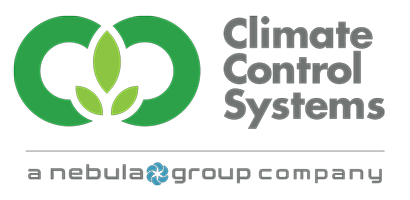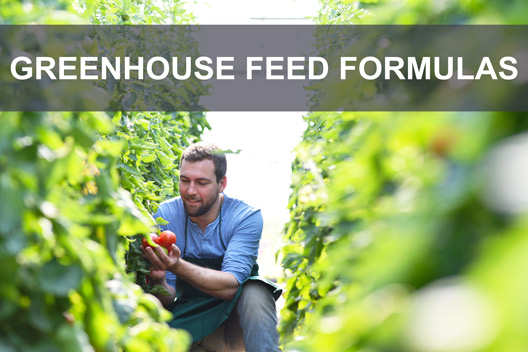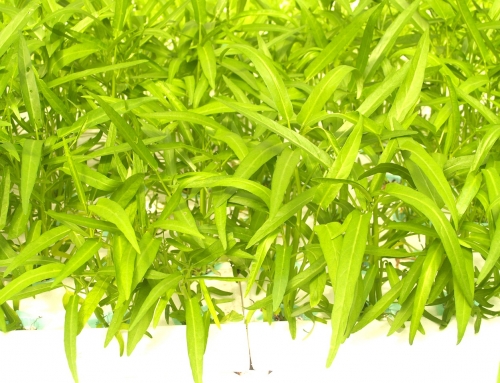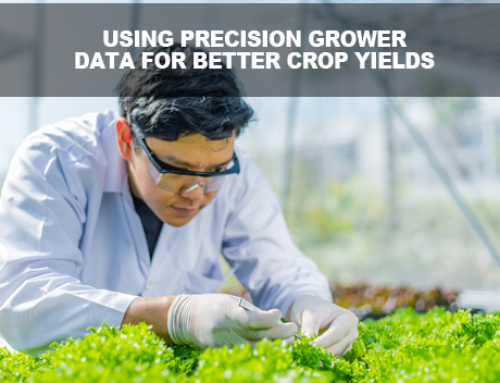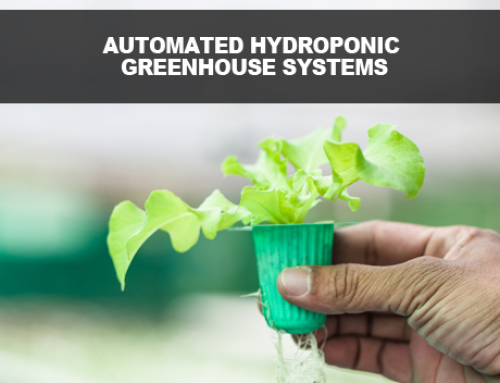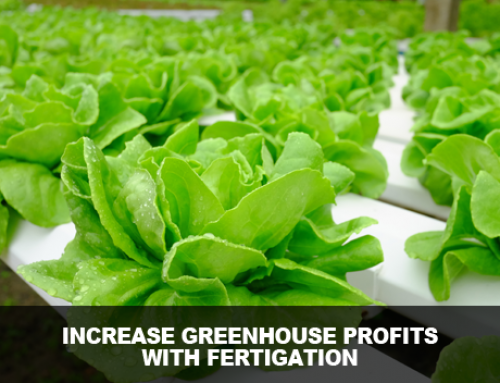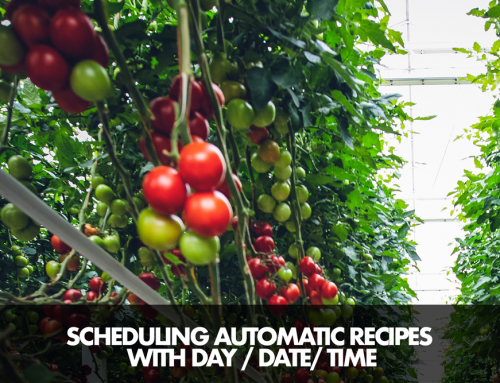Better Crops Through Automated Feed Formulas & Fertigation
To produce high-quality plants at a high yield, proper fertilizer calculations for commercial greenhouse crops is essential. Applying greenhouse feed formulas takes place after planting with the use of water-soluble fertilizers. Potassium is pretty common and some other nutrients can be added exceptions. Some other nutrients occurs even before planting by mixing them directly into the growing medium in which case it is good to note, that way a plant isn’t receiving too much of any one type of nutrient or fertilizer.
Most growers use injectors (irrigation injector pumps) to add fertilizers and help get their own greenhouse feed formulas out to the crops, but some systems are more advanced than others. Some growers inject small quantities of stock solution, made of a concentrated fertilizer, into the irrigation line… one barrel solution at a time. The solutions usually get mixed in a blending tank, sometimes even hand mixed with a water hose and a bag of fetilizer to supply the greenhouse with its crop feed. Depending on the size of the operation at some point in a commercial greenhouse operation newer, more advanced greenhouse automation technology can and will take over this task. Each fertilizer solution will have its own injector, on a stainless steel frame all run by computer software. This is know as a Fertigation System, at Climate Control Systems Inc, we combined world class greenhouse automation, irrigation and software that can control your fertilizer feed formulas for multiple crops at very large volumes of water. One machine (Our Fertigation Manager™) can greatly increase productivity of the grower as well as increase plant yields and overall plant health. Certainly this is way more convenient than manual mixing and handling of dry fertilizers.
Most growers apply greenhouse feed formulas each time plants are watered to ensure the supply of essential elements is adequate for growth. Parts per million of nitrogen (ppm N) is typically the way to state fertilizer rates. It is a convenient unit of measure that indicates the fertilizer concentrations.
Fertilizer Calculations for Greenhouse Crops
The recommended rate for the fertilization of many floricultural crops is 150-250 ppm N, applied via irrigation water as a constant feed. What does that mean? A 20-20-20 fertilizer is 20 percent nitrogen. It takes 13.5 ounces (380 grams) per hundred gallons (approximately 380 liters) to make a 200 ppm N solution.
A 15-15-15 fertilizer is 15 percent nitrogen. Use 18 ounces (510 grams) per hundred gallons to make a 200 ppm N solution. The reason for stating parts per million is to differentiate the fertilizer solution form the fertilizer analysis. Commercially sold N-P-K fertilizers vary in the nitrogen percentage. Using parts per million is important for the standardized fertilizer recommendations.
Each injector delivers a ration of stock solution per increment of irrigation water. A 1:100 injector delivers 100 gallons of concentrated solution. The 1:200 injector delivers 200 ppm N. For the same fertilizer, the 1:200 injector has to be twice the concentration as the 1:100 injector.
Some injectors have a fixed ratio. Others have an adjustable ration. The adjustable ratios are a preference of many growers. It allows the application of different greenhouse feed formulas to crops having different nutrient needs. Preparation of greenhouse feed formulas is of the utmost importance.
Growers need accurate amounts of fertilizer to mix greenhouse feed formulas. Most fertilizer injectors and commercial fertilizer manufacturers provide a table that simplifies the determination. Fertilizer bags also have tables providing the information.
There is a formula growers use to calculate the needed amount of fertilizer. You need to know the fertilization rate, the nitrogen percentage, and the ratio of the injector.
Fertilizer amount needed to make one volume of greenhouse feed formulas = the desired concentration (ppm N) X the dilution factor
or
the desired concentration (ppm) X the conversion constant
The dilution factor is the large number of the injector ratio and the constant (C), determined by desired units is as follows:
- C = 75 ounces/U.S. gallon
- C = 1200 pounds/ U.S. gallon
- C = 10 grams/liter
The equation makes calculating the needed amount for mixing greenhouse feed formulas easy. The equation works for any common unit of measure and all fertilizer injectors. Many growers have no access to accurate scales for weighing fertilizer.
Most commercially formulated N-P-K fertilizers come in 25-pound bags. Multiplying 25 X 16 gives 400 ounces per bag. Divide 400 by the amount needed for one volume of stock solution (greenhouse feed formula). Numbers such as 8.99 round to nine gallons.
Add fertilizer before adding water. Adding fertilizer to nine gallons of water yields more than nine gallons of stock. The resulting solution is more dilute than desired. Warm water works best for mixing the solution.
Complete fertilizers always have nitrogen, potassium, and phosphorus content. They sometimes contain other minor or secondary essential elements. Numbers such as 15-15-17 and 20-20-20 indicate the percentage of nitrogen, potassium, and phosphorus in that order.
Phosphorus and potassium are in an oxide form. To determine the percentage of phosphorus, divide the phosphorus number by 2.3. To determine the percent of potassium, divide the number by 1.2. For a 15-16-17 fertilizer, the phosphorus percentage is 16 divided by 2.3 or seven percent, and potassium is 17 divided by 1.2, or 14.2 percent.
The conversion rule is helpful when using simple fertilizers like potassium nitrate when the phosphorus levels are adequate. It is easy to determine the amount of fertilizer needed for stock solutions using a hand-held calculator. Recheck calculations ensure accuracy and avoid costly mistakes.
It is possible for injector ratios to change over time. To prevent nutritional problems, periodically determine the injector ratio. There are two ways to determine the ratio. The most common method measures the stock volume solution taken up, and the volume of diluted stock delivered simultaneously.
Divide the amount delivered by the amount taken up. Five gallons of diluted stock produced and six fluid ounces of taken up stock has an injector ratio of 1:107. The five gallons multiplied by 128 (the number of ounces per gallon) is 640. Divide 640 by six to get approximately 107.
Greenhouse Technology & Automation
There is greenhouse technology that provides soil and feed information from the plants to the greenhouse computers. As growers read the data, they make adjustments to the irrigation needed. This process is greenhouse automation at its best.
Greenhouse automation uses WiFi to send data about the soil to the central computer in the greenhouse. It then sends signals to all other controllers throughout the operation to trigger any adjustments to be made to the greenhouse environment, like opening up the vents, to decrease humidity. They use the data from the plants or from grower set points to make any needed irrigation adjustments or internal environmental changes.
A recommended component of the greenhouse automation is the GS3 Ruggedized Soil Moisture, Temperature, & Electrical Conductivity Sensor. It has stainless steel needles and an epoxy body. The internal circuitry is a cutting edge design optimized for harsh environments and soil-less substrates.
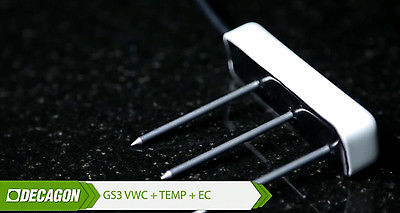


It has an increased temperature range and a wider electrical conductivity (EC) measurement range. Stainless steel needles improve sensor contact and the ability of the sensor to measure the EC or porous substrates like perlite or peat.
The GS3 independently measures EC, temperatures, and water content. The 70 MHz frequency minimized textural effects and salinity. It is the most accurate media sensor for soil or soil-less substrates and all growing mediums. The extended surface area of stainless steel needles reduces substrate disturbances when inserted.
A stainless steel electrode array measure EC. An onboard thermister measures temperature. With the used of DataTrac 3 software, the GS3 data determines:
- Pore water EC
- Growing degree days
- Plant available water
The data provided affects the development and growth of plants automatically with our greenhouse automation technology. The system allow growers to adjust fertilizer and water applications based on the changing needs of the plants. Pillars of the system are:
- Convenience
- Functionality
- Reliability
- Accuracy
- Efficiency
- Better Production
- Better Plant Health
- Better Plant Yield
Conclusion
If you are interested in learning more about what our Automation Systems can do for your Greenhouse Feed Formulas and crops, just get into contact with us here and we can start a conversation about your operational goals and specific commercial greenhouse growing specifications.
